So many plants we are taught to think of as weeds are actually super helpful. One way we can prepare for when the SHTF is to learn as much about those beneficial weeds as we can.
A great example of this is mullein. Considered a weed by most people, mullein has many medicinal and survival uses.
So if you find mullein growing in your backyard, don’t step on it- harvest it!
Identification
Mullein, Verbascum thapsus, grows in well-lit, disturbed soil but will grow in compacted soil as well. Like many weeds, it doesn’t need good soil to thrive.
It is a biennial plant, so it doesn’t flower until its second year. So keep that in mind when you are looking to harvest mullein.
Mullein Leaves
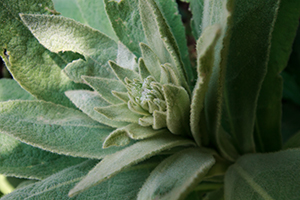 An easy way to identify mullein is by its leaves.
An easy way to identify mullein is by its leaves.
In the first year, the leaves will grow in a rosette pattern. They are oval and grayish-green colored.
But the most distinctive feature is the tiny hairs that give the leaves a velvety feel.
The leaves earned the plant one of its common names- cowboy toilet paper.
Related: Toilet Paper Pills – The Best Invention You Didn’t Know Existed
Flowers
Mullein doesn’t produce flowers until the second year. When it does, you will see a single stalk growing from the center of the leaves.
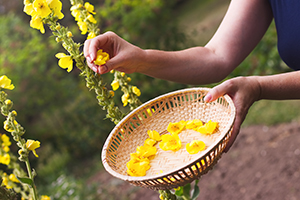
This stalk can reach eight feet tall, and many yellow flowers appear on it in summer. Each flower only opens for a short period of time for one day. They usually begin flowering in June and continue to bloom until August. The flowers on the bottom of the stem will open first, and then it progresses up the stem.
Harvesting
You can harvest the leaves year-round.
These can be dried in the sun or a dehydrator and stored for later use. There are many uses for dried mullein leaves. In addition to teas and other medicinal uses, the leaves have a host of survival uses we will discuss later. So, keep reading.
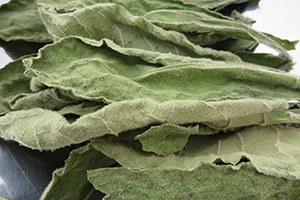 It’s best to gather the flowers mid-morning after the dew has dried. You should dehydrate your flowers immediately after picking them. You can do this is a commercial dehydrator or in your oven at a low temperature. Once the flowers are dry, store them in an air-tight glass jar.
It’s best to gather the flowers mid-morning after the dew has dried. You should dehydrate your flowers immediately after picking them. You can do this is a commercial dehydrator or in your oven at a low temperature. Once the flowers are dry, store them in an air-tight glass jar.
The flowers are susceptible to moisture, so you may want to add a silica gel packet to your jar to preserve their freshness.
Make sure if you are harvesting in the wild, you do so in an area that is free from chemicals and herbicides.
Medicinal Uses For Mullein
Mullein has been used in traditional medicine for thousands of years.
Mullein is anti-inflammatory, anti-bacterial, and contains compounds that can have antioxidant properties. The leaves and flowers are used to treat a variety of different conditions.
Mullein Tea
• Dry leaves – one tsp
• Water – 8 ounces
• Honey – to taste
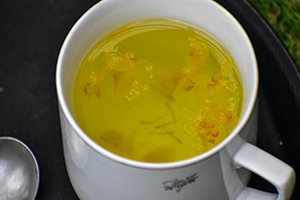 Steep one teaspoon of mullein leaves in a cup of boiling water. Allow the tea to cool before you drink it. You can drink 1-2 cups per day. You should consume it slowly, one tablespoon at a time.
Steep one teaspoon of mullein leaves in a cup of boiling water. Allow the tea to cool before you drink it. You can drink 1-2 cups per day. You should consume it slowly, one tablespoon at a time.
Mullein tea can be used to treat a variety of conditions. It is, of course, great for respiratory problems, but it also a mild sedative and a diuretic.
Respiratory Issues
It is commonly used to treat respiratory conditions. Mullein contains a high concentration of mucilage which makes it effective in treating asthma and other respiratory complaints.
Traditionally, the dry leaves were smoked to provide immediate relief of asthma symptoms.
However, you can make a tea or a tincture that is effective for rapid relief, as well.
Earaches
Mullein is also used to treat earaches. Studies have shown that it is effective at relieving the pain associated with ear infections.
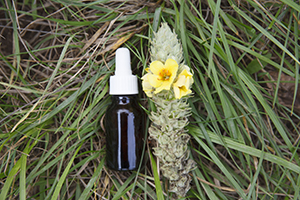 In this case, mullein oil is used rather than tea.
In this case, mullein oil is used rather than tea.
Mullein oil can either be purchased or made easily at home. You just need a few drops of warm oil.
Drop them into the ear canal and then gently massage outside of the ear.
You can repeat this every thirty minutes to help with the pain.
Mullein oil can also help with skin conditions such as eczema.
Related: How To Make Oil From Plants At Home
Survival Uses For Mullein
Mullein can be used for more than just medicine. If you look at all the common names for mullein, you can begin to get an idea of some of its uses.
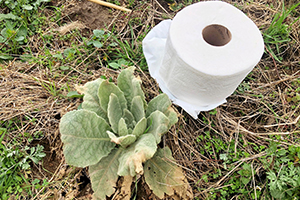 One common name is cowboy toilet paper. And mullein can be used for exactly that. The soft velvety leaves are a great choice when you are caught unprepared with your pants down.
One common name is cowboy toilet paper. And mullein can be used for exactly that. The soft velvety leaves are a great choice when you are caught unprepared with your pants down.
Stock up on the plant in summer and dry the leaves for toilet paper to use in the winter months.
While you won’t find the leaves quite so soft once they are dry, you will be surprised by how absorbent they can be. Once you try it, you may never want to go back to store-bought TP. Mullein can be very soothing to the skin, and the Cherokee made a poultice to treat hemorrhoids.
Related: 10 Most Powerful Medicinal Plants Used by Cherokees
Some people do find mullein can irritate their skin, so make sure you do a spot test before rubbing it on your sensitive places!
As long you aren’t sensitive, the leaves can also be used as bandages. The Cherokees used the leaves to treat prickly rash in the armpits. And other topical uses include leaf poultices for bruises and rheumatic pains.
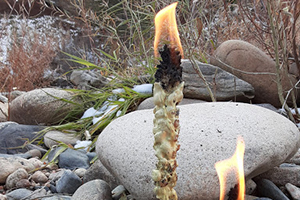
Names like “hig candlewick” refer to its fire-related uses.
The central stalk in the center can be used a torch. Simply dip it into so fat that it will help it burn longer.
You can also use mullein to start fires with the bow or hand drill method.
Use the dry leaves and seeds pods as tinders as they also burn well. In fact, many cultures in the past used dried mullein leaves as wicks.
Those leaves are useful in other ways as well. In the past, they were used to cushion and insulate shoes in the winter.
And we have one last use for mullein. It has certain saponifying compounds that make it toxic to fish. In the past, people have added mullein to a pond to aid fishing.
Final Thoughts
As you can see, mullein has a wide range of uses, both medicinal and survival.
Now that you know what to look for, mullein should be easy to recognize. Look for the velvety leaves growing in a rosette pattern.
You won’t see the yellow flowers until the second year.
Now you know to harvest this beneficial plant- so watch where you are walking!
You may also like:
How to Store Your Drugs for an Extended Shelf Life
This Hidden Survival Garden Will Keep You Well Fed In The Next Crisis (Video)
Why Now More Than Ever You Should Prepare For the Upcoming EMP
Why People Will Happily Line Up to be Microchipped Like Dogs

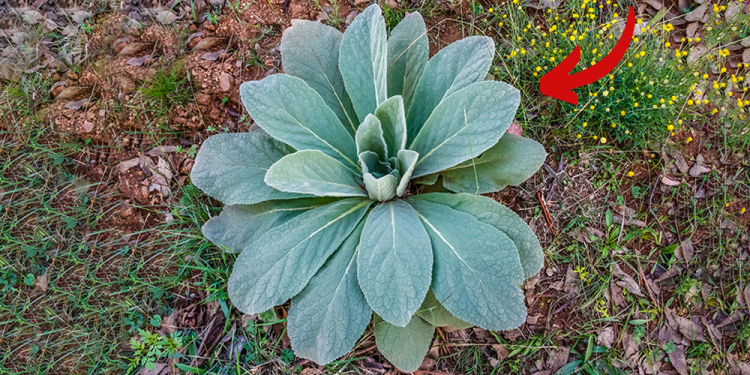
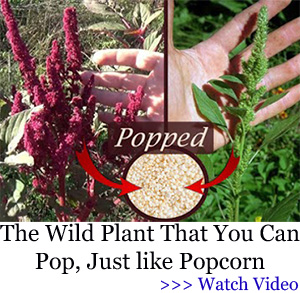













Mullein when the SHTF!
It looks familiar, is this the same as Lamb’s ear?
oh I love the mullein !…got it all over my ranch in south central Texas ! BIG FAN ! on visits to Red River NM I see it growin EVERYWHERE !
Kavin,
I also have it all over my 1.5 acre yard, and in my tree farm of 15 acres. Seems to grow well in the South. I’ll be more careful in my mowing in the future. The Forest seems to be your grocery and pharmacy all together.
Can it be transplanted to my area if I cannot find it here? I live in Alabama
I live in Indiana and we brought a plant indoors in a pot that we’d found in our yard that fits this description exactly. So, if it is truly Mullein and is growing in IN, you shouldn’t have any issues in AL, or so I would think.
Oh, we won’t talk about the relation between Mullein seeds and catching fish, will we? Survival indeed.
Seeds of mullein contain rotenone and other chemicals toxic to fish. Fishing with poison is illegal in the U.S. but definitely an important survival hack. Black walnut, buckeye, poke sallet, soap berry, Mexican buckeye, lechaguilla are just a few of the common plants you can use to stun or kill fish, generally just by crushing a large amount of seed and throwing it in still water.
Actually a reply to Judge Holden: From a Mother Earth article on line: “Rotenone is a potent botanical pesticide that has become a source of mounting concern because of its toxicity and potential environmental impact. There is significant confusion concerning whether and how this material may be used in USDA-certified organic farming.
“Although the Organic Materials Review Institute (OMRI) Generic Materials List identifies rotenone as “Allowed with Restrictions” on organic farms, the material is only legally allowed under certain conditions. Other substances commonly used with rotenone, including piperonyl butoxide, are explicitly prohibited for use in organic agriculture. The National Organic Program (NOP) is currently exploring possible changes to the regulations, potentially limiting or prohibiting the use of rotenone.
“Rotenone is commonly derived from the roots of various tropical plants native to Southeast Asia, South America and East Africa. Historically, farmers have used this extract as a foliar spray to control pests on vegetables, berries, tree fruits, nuts, forage crops and sugarcane. It was first registered in the United States in 1947, and through the years, the Environmental Protection Agency (EPA) required a number of studies to further confirm its safety status for use in agriculture. In 2004, the EPA required an inhalation neurotoxicity study to further investigate the possibility of rotenone leading to Parkinson’s Disease-like symptoms at high dose exposure in animals. Instead, the companies distributing and selling rotenone products voluntarily cancelled all food use registrations for it, except for piscicide (fish kill) uses. Since then, the EPA only supports registration for piscicidal purposes.
“According to the U.S. organic regulations, natural substances (except for those appearing as prohibited in the regulations) may be used on organic farms. Rotenone is considered natural under these regulations, and, therefore, is compliant for use as a pesticide on organic farms. However, because the EPA is the governing regulatory agency for its legal sale and distribution in the United States, and it is no longer registered for uses other than for fish kill, it is not available for purchase by an organic producer in this country.
“Although rotenone is unlikely to be in use on organic farms in the U.S., farms are certified organic all over the world under the U.S. organic regulations. Other countries may have different rules for whether rotenone may be used on agricultural land, so it is possible that the pesticide is used on certified-organic products being grown in other countries. These same certified organic products may be shipped to the U.S., and because rotenone is permitted by the U.S. organic regulations, they would not be in violation of any organic rule.”
When I read his comment, I seemed to recall that at one time I had some pesticide that contained rotenone. Don’t know if it is still way in the back of my garden shed or not. There is stuff in there that has been there since I disembarked from the Ark.
It also jogged my memory that the PDRK Dept of Fish and Game used it to kill all the fish in a lake in the Sierras because someone had introduced a game fish from back East. Don’t recall what the game fish from back East was but it caused a big uproar because the little towns around the lake depended upon the sport fishing industry for for their major income. It wiped out sport fishing in that lake for several years until the fish that were planted grew to catchable size. If my dim memory serves me, I recall that the rotenone treatment did not kill off all the intruder fish because when fishing resumed, they were still being caught in that lake. Proving once again, man makes plans and God laughs.
Now that I have posted the comment about rotenone, my archive brain storage search popped up with northern pike as the fish that was introduced into the lake. Of course, like most fish, plants, animals and folks who are introduced to CA weather, the pike loved it in that lake and flourished. They even survived the big die-off of the native fish that the wonks from F&G were concerned would be decimated by the pike. Perhaps if they had left well enough alone the pike and the native fish would have reached accommodation and the folks in the towns that suffered significant financial blows would have avoided all that. Pike are game fish and the F&G folks could have avoided all that taxpayer money spent, loss of sales tax. loss of motel tax money, loss of business for all the fishing related suppliers, by eliminating size and catch limits on northern pike in that lake. Might have even spurred a growth in the fishing industry because I understand that a pike is good eating and a great sport fishing target as they do not come ashore willingly. I could be corrected on that as I have never fished for pike neither deliberately nor accidentally and as far as I know I have never eaten a pike.
Thank you, JH. I would have never known about the other piscicides if you hadn’t listed some of them. I knew about black walnuts but that was the limit of my knowledge. Also picked up a new word, “piscicide”
“Your Honor, the defendant is charged with three counts of piscicide in the first degree.”
The Judge: “Say what?”
Don’t know how to pronounce it yet but I know it when I see it.
I’ve seen this on my property, didn’t know what it was. Thanks, I will treasure it. Can you tell me how to harvest?
Do you have any new books?
There is no such thing as organic! Do you not realize our skies have been sprayed with toxic junk for years? The air, waters, vegetation, animals, us, EVERYTHING are loaded with this stuff.
I don’t think the author has used mullein for toilet paper. It looks like it would make a great natural TP because it is fuzzy, but that fuzz breaks off tbe leaves and sticks into the skin and causes SEVERE irritation. If you’ve ever had the displeasure of irritation from fiberglass insulation, you know how miserable that is. Mullein does the exact same thing in a VERY sensitive area.
I have read several articles over the years that say mullein is nature’s toilet paper, but I don’t think those authors ever actually tried it. Let me save you some time and pain . . . DON’T.
I wondered about that myself. A lot of fuzzy plants have fuzz as protection against insects and other plant predators. A good many fuzzy plans will irritate the skin of folks who are sensitive to a variety of irritants. So I will ask the question: HAS ANY ONE ON THIS LIST EVER USED MULLEIN LEAVES AS T.P.? Has RACHAEL BLASBALG ever used mullein leaves as t.p.? In fact, I will go one further: Has RACHAEL BLASBALG ever used mullein for any of the purposes contained in this article? Or is this just an article copied from somewhere else with no verification by the author as to its authenticity?
Has anyone who follows this list ever used mullein for any of the purposes listed in this article?
Clergy Lady: Have you ever used mullein leaves for any of the purposes listed in the article? If anybody has so used mullein, Clergy Lady would be my leading candidate for such use.
Inquiring minds want to know.
It occurs to me Clergy Lady is the toughest customer posting here and would make do with 16 grit sandpaper and never quit smiling. I learned as a kid leaves are not so good and if you are fool enough to be caught out in the woods w/o toilet paper the best expedient is to cut up and sacrifice your underwear, A piece of shirt tail or pants cuff, or your favorite bandanna.
How big was the earthquake in the PDRK when Judge Benitez overturned the assault weapon ban?
Judge: Judge Benitez granted the State A.G. 30 days in which to file an appeal. I would imagine that the just passed weekend was spent in legal research and initial drafts of an appeal to the Fourth Circus Court of Appeals. Although I must say that with certain recent Trump appointees, the tenor of the court has taken on a different look. It no long is the dead certain bastion of ultra liberal thinking that made it the laughing stock of courts everywhere. In other strange news, a bill to add a 10 percent surcharge on ammunition and firearms sold in the PDRK failed to pass the muster in Schitzomento. The dems have 59 of their breed in the assembly and needed 54 votes to pass the bill. BUT IT FAILED TO GET THAT NUMBER OF VOTES. Wow! Talk about a freaky Friday! We are not out of the woods yet because with some political maneuvering, the bill isn’t dead, it is held for re-consideration which means that there is going to be some serious arm-twisting being applied between now and the end of the legislative session. There was an eclipse of an especially full moon in the recent past. I wonder if the old cops’ story about full moons bringing out the weirdos is true. How else could what should have been a dead bang winner not muster enough votes when they didn’t even need the whole team on the field? I don’t know what the final vote was but obviously at least 6 dems weren’t playing team ball.
Although, it just suddenly occurred to me that there were a series of earthquakes continuing to today in the Salton Sea area of the PDRK. According to news reports there were no reports of damage or injuries even though the biggest of the quakes was a 5.3 which is enough to get one’s attention.
The Salton Sea used to have a thriving community of desert rats, but since it was an artificial creation created by a humongous leak in the All-American Canal, once the leak got plugged, there was no more inflow of water and the sea started drying up. Beach front property is now about a mile from water and only real die-hards live there now. Salton Sea beach front property is probably the cheapest property anywhere in the PDRK. In addition, there has been significant die-off of the fish that were planted by the DFG during the Salton Sea’s heyday and the odor of deceased fish baking in the hot desert sun has added to the general air of decay. Oh, boy! What a pun and it was accidental.
TP:
I have this in my yard and it will work for tp. only if it is fresh from the plant so the fuzzy hair that ya’ll are worried about will not come off until the plant start to dry up. BUT if you have a sensitive back side I would not risk the wipe.
I will put my ass to the test for the good of the wild thing that we will be using in a SHTF scenario. Sorry can’t show ya’ll pics… LOL.
I will get back to give info on the wipe test.. very soon.
Thinking about my query, I recall reading someplace, without verifying the veracity of the information, that the Romans used to use broken pottery for wiping purposes in the public loos in Old Rome. Obviously the old Romans had tougher butts than I possess. I cannot imagine using a piece of broken pottery in lieu of Great Northern Super Soft.
I have also read that the Brits in times gone by used sticks for similar purposes, leading to the cry in the dark, “Oh, no, I got the mooky end of the stick.” which led to the common aphorism, “Well, he certainly got the dirty end of the stick on that deal.” Or a more cruder expression in certain other circles which I will leave to your imaginations. We don’t hear that expression so much any more but it used to be quite common when I was growing up in the dark ages.
That would lead me to again believe that the old tymie Brits had much tougher butts that we modern day U.S. crybabies.
I also remember reading that during WWII, the British Army was astounded by the amount of toilet paper that the U.S. Army allowed as daily use by each individual soldier in figuring out how much of said product needed to be shipped across the Atlantic to keep the Yanks with clean bottoms. I won’t comment further on the dichotomy in usage but it does make me wonder a bit about the state of Brit undies.
Red Ant: I look forward to your fully reporting on your mullein experiments.
Well LCC
Yes sir I truly fill that you had to be a hard ass back in those days. We today are soft and softer.
My Great granny kept corn cobs in the old out house when I was a kid, very different from home. When I would go stay with her. But yes I have used corn cobs as a kid. I did not see any thing wrong with that. We were raised that way. But today I love my soft TP.
Okay let’s get to the bottom of this. lol…
This time at lunch it became time for the test and it was not that bad. It did tear in the start of the prosses Butt I recovered and made it thru. It can be used as TP and as long as you are gentle, the leaf will hold up. Fold and repeat. I will say this as long as the leaf in fresh and not dried in any way, so the fussy things won’t come off and then irritate the area that you are working on.
Remember to ck with your DOC to make sure you are not allergic to any form of plant life before you start the prosses.
I think it’s better then pottery. Butt, use what you got…
Lady’s take precaution at the time so no feather then the back side. Not worth the risk.
I give it a #1 rating for me. I will use it in the time when it is needed.
If you want to see if it work for you. Let us know how it went.
YES I DID GO THRU WITH IT. NO JOKE.. and no LCC I am not going to see if the pottery will work. lol
Sorry, try to down load some pics but would not work.
One more thing. you can’t flush it. So don’t try it will not work…
PS: wipe at own your own risk. I am not a doctor.
REDANT: Thank you for your first hand report on the use of mullein for sanitary purposes. M.Ward and Sears catalogs were also used for sanitary purposes when they were done being used for shopping. Sometimes it takes a few days for a rash to develop. Hope that is not the case with your trial run.
I was musing on the possibility of our ancestors having more robust body parts than we fold today. I was thinking about office furniture. In earlier years office furniture was almost always wooden and came without cushions on the seat. If you had certain physical problems with sitting you acquired a cushion somewhere and sat on it, but otherwise it was sitting on oak or walnut or some other hardwood. Folks were quite long-winded in those days, so it did require a robust posterior to sit through along winded jury oration or patriotic speech on holidays such as Decoration Day (now called Memorial Day) or Veterans’ Day which, when I was in grade school was commemorated by taps being played at eleven a.m. which commemorated the ending of the War to End All Wars which sadly led to a century of warfare.
LCC:
Well so far no rash butt it might take longer. At work they say I’m a hard ass.
If anything might go bad I will let you know…
Well it’s been a bit and still no out brake of rash or inflamed areas.
Butt my plant is about 5 foot tall and going to seed out. Harvesting the seed for relocation on the plant.
Just saying.
Hey my plant has grown to 7 feet tall. The seed pods are almost 3 and a half feet tall. Will be getting seed soon.
So after you’ve collected and dried the yellow flowers and stored in a desicated glass jar… what do you use them for?